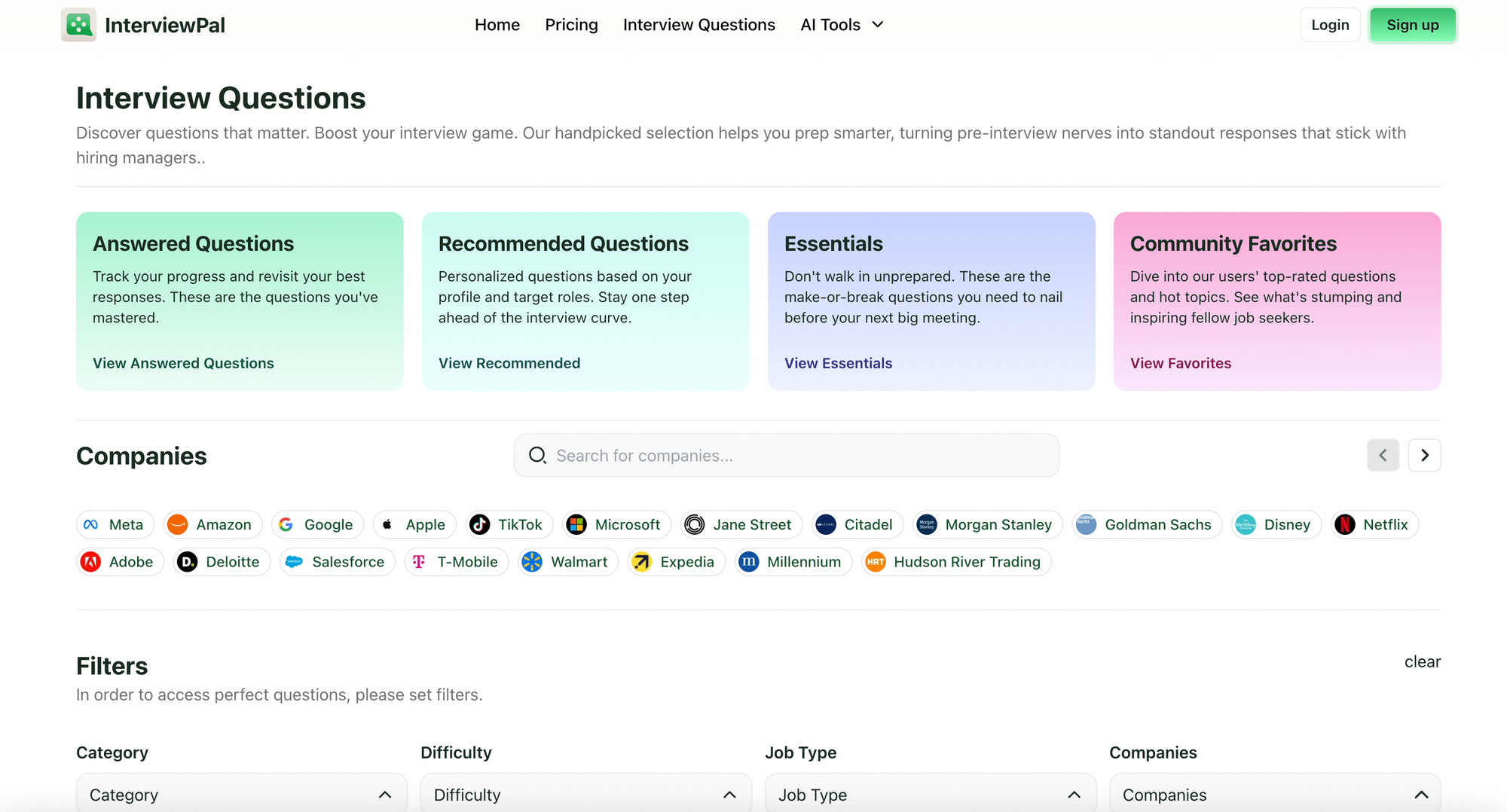How to Write a Cover Letter That Actually Gets You Hired
Most cover letters end up ignored, but yours doesn’t have to. Discover practical tips to quickly showcase your skills, avoid common mistakes, and write a cover letter hiring managers actually read. Boost your chance of landing that interview now.

Look, I'll level with you, nobody dreams about writing cover letters. But as someone who's reviewed thousands of them (and hired people based on them), I can tell you they matter. A lot.
Done right, your cover letter becomes your secret weapon in a crowded job market. Done poorly? It's the reason your perfectly good resume ends up in the rejection pile.
Let's break down exactly how to write a cover letter that makes hiring managers take notice.

Stuck on your cover letter? Let us help you write one that actually sounds like you for FREE.
Why Cover Letters Still Matter?
Recent studies show 83% of hiring managers read cover letters and take them into account in hiring decisions. As a hiring manager myself, I can confirm this statistic doesn't lie. Here's what nobody tells you: Most cover letters are terrible. I'm talking painfully generic, riddled with clichés, or just plain boring. The upside? The bar is shockingly low, making it easier for you to stand out.
Your cover letter isn't just some bureaucratic formality. It's your chance to:
- Demonstrate you've done your homework about the company.
- Show how your specific skills solve their specific problems.
- Reveal your communication style and personality.
- Address potential red flags in your application.
Common Hiring Manager Pain Points (and How to Solve Them)
On the flip side, certain cover letter missteps consistently frustrate hiring managers. By being aware of these pain points, and fixing them, you can avoid the rejection pile:
- Generic, one-size-fits-all letters: Hiring managers can spot a form letter instantly, and 54% of them hate getting generic applications.Solution: Customize each cover letter. Mention the company by name and reference specific projects or values. (Only ~12% of candidates bother personalizing their cover letters, so doing this already gives you an edge!) Show that you wrote the letter for that job.
- Too long or dense to skim: A novel-length letter with wall-to-wall text will lose the reader. Many hiring managers will only give your letter 30 seconds or less on a first pass.Solution: Keep it under one page (about 250–350 words). Break up text into short paragraphs with plenty of white space. Make it easy for them to pick out key info at a glance.
- All claims, no evidence: Vague statements like "I'm a hard worker and a team player" don't prove anything. This is a common gripe, letters full of buzzwords but no backup.Solution: Provide specific examples and metrics. If you boosted sales by 20% or managed a team of 10, say it. Concrete achievements with numbers or details serve as evidence of your abilities.
- Repeating your resume bullet points: If your cover letter just regurgitates your resume, it's not offering new value (and it bores hiring managers). Solution: Use the letter to tell the story behind the resume. Explain the context and impact of one or two key accomplishments, or what those experiences taught you. Share a brief narrative that connects your experience to the role (more on storytelling below).
- Sloppy errors or wrong addressee: Nothing will sour a hiring manager faster than seeing the wrong company name or typos in your letter. It screams lack of attention to detail.Solution: Double-check every name and detail. Proofread meticulously (or have someone else do it). A polished letter shows professionalism; a careless one can ruin an otherwise great application.
Do Your Research (Seriously, Do It)
I can't tell you how many cover letters I've tossed aside because the applicant clearly knew nothing about my company. It's the professional equivalent of telling someone, "I really want to date you," but not bothering to learn their last name. Don't be that person.
Before writing a single word of your cover letter:
- Dig through the company's website and social media.
- Look up recent news articles or press releases about them.
- Check out employee LinkedIn profiles or the company LinkedIn page.
- Read customer reviews, case studies, or any relevant industry news.
While researching, look for:
- Projects or initiatives the company is currently working on.
- Challenges the organization or industry might be facing.
- Company values, mission, or culture cues.
- Any recent wins, developments, or trends that involve the company.
This research pays off in two ways: it helps you customize your letter (showing you're not sending the same letter everywhere), and it gives you great talking points for the interview later on. When you can casually mention, for example, the company's recent expansion or a product launch, you'll instantly come across as a well-informed candidate who genuinely cares about the role.
Nail Your Opening (Because First Impressions Stick)
Most cover letters start with some version of "I'm writing to apply for the ______ position..." – which is about as exciting as watching paint dry. You want to hook your reader from the get-go. Skip the bland introductions and try an opening line that grabs attention and highlights a relevant connection or achievement.
Instead, hook your reader immediately with approaches like:
- The company connection approach: "When I saw Brightpath's recent initiative to bring solar technology to underserved communities, it instantly reminded me of the volunteer project I led that installed renewable energy systems in rural areas – work that reduced energy costs by 40% for over 200 families."
- The problem-solver approach: "As someone who has increased e-commerce conversion rates by 32% through strategic A/B testing and user experience improvements, I was excited to see TechCraft's opening for a Conversion Specialist at a time when online shopping behaviors are rapidly evolving."
- The genuine enthusiasm approach: "After using Foodie's meal planning app to transform my family's chaotic weeknight dinners into stress-free experiences, I was thrilled to discover your Marketing Coordinator opening – a perfect opportunity to combine my passion for your product with my five years of digital marketing expertise."
Each of these openings makes the reader think, "Okay, this person gets us." In one sentence, you're showing you've done your homework and you have relevant experience or enthusiasm. You're not just blindly firing off applications to every company out there, you have a specific reason for wanting this job at this company. A strong opening sets a tone that makes the hiring manager excited to keep reading.
Where Most Cover Letters Fall Apart
After a great opening, the real work begins. The middle of your cover letter is where you connect your experience directly to their needs. This is where most people get it wrong by committing common sins like:
- Listing random achievements that have no relevance to the job at hand.
- Making vague claims (e.g., "I'm a results-oriented go-getter") without evidence.
- Repeating your resume bullet points verbatim, offering no new insight.
Don't fall into those traps. Instead, try this simple framework for your mid-section:
- Identify 2–3 key requirements from the job description (the must-haves for the role).
- Match each requirement with a specific accomplishment or experience from your background that demonstrates you meet it.
- Include concrete metrics or details where possible (e.g., "increased engagement by 87%" or "managed a budget of $1M").
- Explain how your experience benefits them. In one line, connect your achievement to what it means for the prospective employer.
For example, let's say the job posting emphasizes social media marketing and growing engagement:
Weak: "I have extensive experience in social media marketing and team leadership."
Strong: "At GreenBrand, I led a team of four content creators to develop an Instagram campaign that increased engagement by 87% and drove 12,000 new website visitors in three months. This targeted approach to visual storytelling would support your stated goal of expanding brand awareness among younger demographics while maintaining your unique aesthetic."
See the difference? The second example is specific, results-focused, and explicitly connects the candidate's work to the employer's goals. By spelling out the impact of your work (12,000 new visitors) and linking it to the company's objectives, you make it easy for the hiring manager to envision you delivering similar results for them.
Key structural elements of a great cover letter tend to be the same across industries. The graphic below outlines the anatomy of a memorable cover letter, highlighting essentials like a personalized hook, a demonstrated understanding of the employer's needs, your experience presented as the solution to their problem, and a confident closing call-to-action. Notice how every part of the letter is an opportunity to reinforce why you're a fit for the role and how you can help the company succeed.
Try Out: Our New Feature - Interview Study Plans
Build A Story Using Your Experience
Facts and figures are important, but story beats stats when it comes to memory. One advanced technique to truly stand out is to turn your experiences into a compelling narrative. Instead of just saying what you did, briefly tell the story of how you did it and why it mattered. Humans are wired to respond to stories, use that to your advantage.
Show, don't just tell. For instance, rather than stating, "I have project management skills," you could write: "When our team faced a last-minute scope change two weeks before product launch, I organized daily stand-ups and reprioritized our task list. By rallying the team and adjusting our workflow, we still delivered the product on time – and even 5% under budget." This example not only demonstrates project management, it takes the reader into a scenario and shows your skills in action.
Why does storytelling matter? It creates an emotional connection. A well-crafted cover letter takes the hiring manager on a journey through your relevant achievements. Maybe it's the story of how you fell in love with the company's product years ago and now want to contribute to it, or a quick anecdote about a challenge you overcame that mirrors a challenge the company faces. These narratives are memorable and can convey your passion and personality in ways a bullet point on a resume can't.
A few storytelling tips for cover letters:
- Keep it concise: This isn't a novel. Choose one mini-story or theme and thread it through the letter without rambling. It could be the story of your career pivot, a key accomplishment, or a personal moment that inspired your career path.
- Make it relevant: The story should underscore why you're a great candidate. If you're applying to a healthcare role, the tale of how you successfully managed a tricky patient case ties in nicely; an unrelated story about your backpacking trip (no matter how interesting) probably doesn't.
- Use the STAR method in narrative form: Situation, Task, Action, Result. Set up the challenge or situation briefly, describe what you did (action), and highlight the outcome. This naturally creates a narrative arc with a problem and a resolution, which is satisfying to read.
- Convey growth or motivation: Stories of personal growth, learning, or what motivates you can show that you have introspection and drive. For example, "Ever since I saw a data breach at my last company, I became the go-to person for security improvements, which is why I'm excited about the cybersecurity focus of this role." It connects a personal motivator to the company's needs.
By the end of a brief narrative, a hiring manager should not only understand what you accomplished, but also get a sense of who you are and what drives you. That makes you more memorable. As one career expert put it, a cover letter shouldn't just list skills and achievements, it should convey personality and tell a story.
Psychological Triggers in Persuasive Writing
Crafting a convincing cover letter isn't just about facts and stories, it's also about psychology. Great marketers and salespeople use psychological triggers to persuade, and you can borrow some of those tactics for your cover letter (in an honest way) to make your message more compelling. Consider weaving in elements of:
- Social proof: People trust what others vouch for. Subtly highlight praise or endorsements you've received. For example, mention if you were hand-picked by a CEO to lead a project, or if clients or managers consistently commend a particular strength of yours. A line like, "My former supervisor often referred to me as the team's 'efficiency guru' for my ability to streamline processes," shows that others recognize your value (without you outright bragging). Social proof leverages our herd instinct – if others say you're great, the reader is more likely to believe it.
- Authority: Establishing authority means positioning yourself as an expert or someone with credibility. You can do this by referencing your credentials or years of experience ("As a certified public accountant with 6 years of experience in forensic accounting..."), or by noting a major accomplishment that conveys expertise ("led a regulatory compliance project audited by the SEC with zero findings"). Even the tone you use can convey authority – confident and factual rather than overly modest. Just be careful to keep it relevant and not come across as arrogant; back up your authoritative statements with facts (which loops back to social proof and specific results).
- Problem-solving language: Remember, a hiring manager ultimately wants to hire someone who will solve their problems. Frame your experience in terms of solutions. Use language that mirrors a consultant's approach: identify the problem, and then explain how you addressed or can address it. For instance, "You mentioned in the job description that improving customer retention is a priority. In my current role, I tackled a similar challenge – our 3-month customer churn was 25%. I initiated a follow-up program and personalized onboarding, which cut churn to 10% within a year. I’m excited to bring a similar approach to boost retention for your company." This kind of writing does two things: it shows you understand their pain point, and it positions you as the solution. Using problem-solving (and problem-preventing) language, terms like "improve," "optimize," "resolve," "streamline," "tackle", paints you as a proactive fixer who gets results.
These psychological triggers tap into how we naturally think. Social proof appeals to our tendency to follow the crowd's opinion; authority builds trust that you know what you're doing; problem-solving framing makes the hiring manager envision you in the role, actively improving things. Incorporating these elements, even subtly, can make your cover letter much more persuasive. Just remember to keep it genuine and relevant, integrity and authenticity trump any trick. The goal is to highlight your fit in a way that resonates with the reader’s instincts and needs.

How to Handle Tricky Situations?
Every job seeker has a unique background. If there's a potential red flag or unusual situation in your history, don't shy away from it – address it head-on in your cover letter. Briefly explaining a tricky situation can turn a potential negative into a neutral or even a positive. Here are a few common ones:
Career Transitions
Switching industries or fields? Use your cover letter to connect the dots for the hiring manager. Emphasize transferable skills and the common threads between your past experience and the new industry.
"While my background in healthcare differs from software development, both fields require exceptional attention to detail, creative problem-solving, and the ability to communicate complex information clearly. My experience managing patient data for a 300-bed hospital has prepared me to approach your database challenges with both technical precision and human-centered thinking."
In one paragraph, this candidate preemptively answers the question, "Why hire someone from a different industry?" They highlight relevant skills (attention to detail, problem-solving, communication) and show confidence that their experience translates to the new field.
Employment Gaps
Been out of the workforce for a while? A short explanation in your cover letter can prevent assumptions. You don't owe anyone a detailed life story, but a one-liner can reassure employers that you were doing something productive or relevant during the gap.
"During my career break in 2023, I sharpened my digital marketing skills by completing an advanced certification in analytics and doing freelance consulting for two local businesses. These experiences kept me up-to-date and honed my strategic thinking for this role."
Notice how the example quickly addresses the gap ("career break in 2023") and immediately pivots to how that time was spent building relevant skills. It turns a gap into a story of growth and initiative.
Limited Experience
If you're a junior candidate or changing careers and don't have loads of direct experience, focus on transferable skills, enthusiasm, and quick-learning ability. You can compensate for what you lack in years with what you've done in a short time and how eager you are to contribute.
"Through my internship at Small Agency, I developed social media content that increased follower engagement by 25%. Meanwhile, my leadership role in my university's marketing association taught me to collaborate effectively under tight deadlines – skills I'm excited to bring to your fast-paced environment."
Here, the candidate with limited work experience picks a couple of concrete achievements from school and an internship, showing real results (25% boost in engagement) and teamwork/leadership skills. The tone is confident and forward-looking ("excited to bring to your environment"), which helps reassure the employer that this newbie can hit the ground running.
Close With Confidence (Not Desperation)
Your closing paragraph is your final impression – it should leave the hiring manager thinking, "We should talk to this person." This is not the place to be meek or presumptuous. You want to strike a balance of confident enthusiasm.
Avoid weak endings that undersell you, like: "I hope to hear from you if you think I might be qualified." This sounds unsure. Also avoid overly aggressive closings like: "I'll call you Tuesday to discuss when I can start." That can come off as arrogant or pushy.
Instead, convey optimism and invite next steps without assuming them. For example:
"I'm excited about the possibility of bringing my data visualization expertise to your research team, especially as you expand your climate impact initiatives. I welcome the opportunity to discuss how my approach to translating complex findings into actionable insights could benefit your upcoming projects. Thank you for considering my application."
This closing does a few things right: it reiterates the candidate’s specific value (data visualization expertise) and interest in the company's work (climate impact initiatives), it confidently welcomes further discussion (as opposed to begging for it), and it ends with gratitude. The tone is positive and self-assured, not desperate. The hiring manager is left with the impression that the candidate is professional, excited about the role, and looking forward to the possibility of an interview – exactly the note you want to end on.
Industry-Specific Cover Letter Examples
Tailoring your cover letter to the industry and role is crucial. To make this advice even more concrete, let's look at how a candidate might customize their cover letter for different fields. Below are snippets that show industry-specific focus while applying the principles we've discussed (storytelling, highlighting results, addressing needs, etc.):
Tech Example (Software Engineering)
In the tech industry, emphasize innovation, impact, and how you solve technical problems. Use metrics to show scale or efficiency gains.
"At CloudCorp, I didn’t just write code – I solved customer pain points. When users complained about slow load times, I spearheaded a backend overhaul that cut page load speeds by 40%, improving user retention by 15%. As a software engineer passionate about user experience, I'm excited to tackle performance optimization challenges at your company and ensure your platform runs smoothly at scale."
Why it works: This example showcases a specific technical achievement (backend overhaul, 40% faster loads), quantifies the impact (15% better retention), and links it to the user's needs. It also signals the candidate’s enthusiasm for a key industry concern (performance optimization). A hiring manager in tech sees proof of problem-solving and a focus on user outcomes.
Healthcare Example (Nursing/Healthcare Administration)
In healthcare, highlight patient outcomes, compliance, teamwork, and empathy. Show that you understand the human impact and the regulations/standards in play.
"Working as a charge nurse in the ER at City Hospital, I led a quality improvement initiative that reduced patient wait times by 30% while maintaining 100% compliance with safety protocols. I achieved this by reorganizing triage procedures and coordinating a cross-department task force. In a field where every minute counts for patient care, I’m eager to bring this proactive, patient-centered approach to the Nurse Manager position at your facility, ensuring efficient workflow and exceptional care."
Why it works: This paragraph demonstrates an understanding of healthcare pain points (long wait times, safety compliance). The candidate provides a concrete result (30% reduction in wait times) and notes that it was done without sacrificing safety (critical in healthcare). It also conveys leadership and teamwork (cross-department task force). The emphasis on patient-centered care and efficiency directly addresses what a hospital hiring manager would value.
Finance Example (Financial Analyst/Accounting)
For finance roles, focus on financial impact, accuracy, and trust. Use numbers to show money saved, profits increased, or processes improved. Convey a sense of reliability and strategic thinking.
"In my current role as a financial analyst at InvestCo, I identified an opportunity to consolidate vendor contracts, which saved $500,000 annually in expenses. I also introduced a new forecasting model that improved our budget accuracy by 15%. Finance is all about the details and the bottom line – I take pride in delivering results that drive profitability and efficiency. I'd love to bring this same analytical rigor and cost-saving mindset to your team at FinTech Solutions as you work to optimize your operational budget."
Why it works: The candidate immediately quantifies their impact ($500k saved, 15% better accuracy). This speaks loudly in the finance world. Phrases like "analytical rigor" and "cost-saving mindset" position them as someone who will guard the company's money and improve operations. The example shows they not only crunch numbers but think strategically about improvements – exactly what a finance manager wants to see.
Each of these examples is tailored to its industry but follows the same core principles: know what matters in your field and to that employer, and make it crystal clear how you have done things that align with those needs. Whether it's faster code, better patient care, or saving money, spell out your value in terms that resonate with the role. (And remember, always customize – if you’re applying to another industry, adjust your focus accordingly.)
Make Your Cover Letter More Skimmable
Hiring managers often sift through dozens of applications, so they might only skim your cover letter at first. That means formatting and readability are key. You want your key points to pop out even if someone is just glancing quickly. Here’s how to make your cover letter easy on the eyes:
- Use a clean format: Stick to a professional font (Arial, Calibri, Times New Roman, etc.) at a readable size (11 or 12pt). Ensure there are one-inch margins and clear spacing between paragraphs. A clutter-free layout with text aligned to the left is easiest to skim. (Readers' eyes naturally track left-aligned text.)
- Break it into short paragraphs: Notice in this guide we suggest 3–5 sentences per paragraph. Do the same in your cover letter. Big blocks of text are daunting and likely won't be read closely. Each paragraph should have one main idea (e.g., an intro/hook, a specific experience, a closing thought). When a new idea starts, start a new paragraph.
- Consider bullet points for key achievements: It's not traditional to use bullets in a cover letter, but it's an option, especially if you have three standout accomplishments that you want to make sure no one misses. For example, in the middle section you might write a brief intro sentence then present 2-3 bullets like: "Exceeded sales target by 150% in Q4 2024," "Implemented a new inventory system that cut errors by 50%," etc. Bullets draw the eye and convey impact quickly. If you do use them, keep it to one short section to maintain the letter format.
- Highlight with formatting – sparingly: You generally want to avoid lots of bold or italics in a formal letter. But you could italicize the name of a project or bold a job title in a sentence if it helps key information stand out. For example: "Led the launch of the Phoenix Project (a $2M initiative)..." Minor, strategic highlighting can guide a skimmer's eyes to the most important words. Just don't overdo it; if everything is highlighted, nothing stands out.
- Make the subject line (for email) or header clear: If you're sending an email cover letter, use a specific subject line (e.g., "Application for Marketing Analyst – [Your Name]") so it’s easy to identify. If it's a separate document, include your name and the job title in the file name (e.g., JaneDoe_ProductManagerCoverLetter.pdf). This is a small thing, but it shows professionalism and makes the hiring manager's job easier when sorting through files.
The goal is to ensure the key takeaways of your letter can be grasped in a quick scan. Assume the reader will initially spend 30 seconds or less on it. What do you want them to remember in those 30 seconds? Design your formatting around that. If you’ve followed the advice above – a strong opening, specific achievements in the middle, and a confident close – and formatted it cleanly, your main points will shine through even with a skim. Once you've piqued their interest, they'll go back for a more thorough read (and they'll already have a positive impression from the start).
Edit Like Your Career Depends On It
You’ve written a solid cover letter draft – congrats! But you’re not done yet. Before hitting send, you need to polish it mercilessly. Meticulous editing can be the difference between seeming average and landing in the “must interview” pile. Go through this checklist before you consider your cover letter final:
- Read your letter out loud. It might feel odd, but reading aloud helps catch awkward phrasing or overly long sentences. If you stumble while reading it, consider rephrasing that part.
- Cut unnecessary words. Aim for a total length of about 250–350 words. Every sentence should add value. Delete filler phrases ("In order to", "I believe that", "The fact that") and make sure each point is crisp and clear. Brevity shows you respect the reader's time.
- Double-check names and titles. Ensure you've got the company name, the hiring manager's name (if mentioned), and the position title correct. One of the fastest ways to get rejected is addressing your letter to the wrong company or person. It happens more often than you'd think, especially if you reuse letters – so triple-check.
- Replace generic words with specific ones. Scan for any clichés or vague terms. Instead of "team player," maybe say "collaborative" or give an example of teamwork. Instead of "hard worker," maybe "dedicated 50+ hours/week to meet deadlines." Make your language as concrete and unique to you as possible.
- Get a second pair of eyes. If possible, have someone else review your letter. They might catch errors you missed or tell you if any part is confusing. If no one is available, take a break and then review it yourself later with fresh eyes.
Pro tip: It can help to print your letter and review a paper copy. You'll often notice issues on paper that you overlooked on the screen. Do whatever it takes to make that letter flawless.

Need a starting point? Browse our cover letter templates made for real people, not robots.
Real-World Cover Letter Mistakes I’ve Seen
As someone who’s reviewed hundreds of applications, I can tell you certain cover letter mistakes will instantly send your application to the rejection pile. Learn from others’ blunders and make sure none of these describe your letter:
- The copy-paste disaster: You forgot to change the company name from the last place you applied. (Yes, this happens constantly.) Nothing says "I don't really care about your company" more than talking about the wrong company.
- The autobiography: Starting with "I was born in a small town..." or a similarly long personal backstory that's irrelevant to the job. A cover letter is not a memoir of your entire life – stay focused on the professional you.
- The desperation plea: Saying how much you "really need this job" or that you'd "take any position available." Even if true, desperation is not persuasive. Companies want to know what you can do for them, not how they can save you.
- The mystery novel: Going over one page or using dense paragraphs with no white space. If your letter looks like a large block of text, few will attempt to read it in detail. (Remember the skimmability advice!)
- The vague enthusiast: "I'm passionate about your company!" but with zero specifics about why or what you're passionate about. This just comes off as empty flattery. If you love the company, cite a specific product, initiative, or value of theirs that you admire.
Steering clear of these mistakes is just as important as doing all the right things. A single glaring error can overshadow an otherwise good letter. Use this list as a final sanity check: if you spot any resemblance in your cover letter, revise that part before you send it.
Final Thoughts...
Writing a great cover letter takes time and effort, there's no shortcut. But consider this: if spending an extra hour crafting your cover letter increases your interview chances by even 20%, isn't that worth it? Think of that hour as an investment in landing the job you want.
Remember, your cover letter isn't just about getting a job. It's about finding the right fit – a place where your skills are valued and your career can thrive. The process of writing a tailored letter also helps you reflect on why you're excited about the role, which will prepare you for the interview.
So take a deep breath, do your research, and write something that sounds like you at your most professional and enthusiastic. The job you really want is worth the effort. Good luck – you've got this!






